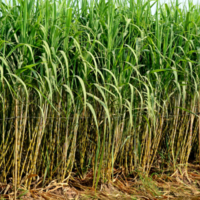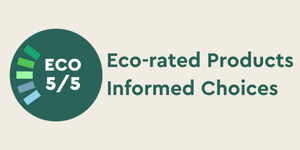Will My Customers Like the Feel of Sugarcane Cutlery?
When switching to compostable cutlery, there’s one question many businesses quietly worry about: Will my customers actually like using it? After all, no one wants to serve a stunning meal or perfectly crafted coffee only to have it undercut (pun intended) by flimsy or awkward utensils. In this post, we explore how sugarcane cutlery performs in the real world, what customers think, and how you can confidently make the switch to eco-friendly disposable cutlery that looks good and feels good.
Why the Feel of Your Cutlery Matters
We’ve all been there—cutting into something slightly firm with a “compostable” knife that folds like origami. It’s not a good look.
For cafes, caterers, food trucks and event organisers, the utensils you provide are part of the customer experience. If your cutlery feels flimsy or cheap, it can unintentionally send the wrong message—no matter how sustainable it claims to be.
That’s why the strength, texture, and look of your sugarcane cutlery matters more than ever. It’s not just about what it’s made from. It’s about how it performs.
What Is Sugarcane Cutlery Made From?
Sugarcane cutlery is made from bagasse, the dry fibrous pulp left over after sugarcane stalks are pressed for juice. Instead of going to waste, this by-product is moulded into compostable plates, bowls, and cutlery.
Key benefits of sugarcane cutlery:
-
100% compostable (usually industrially, sometimes home compostable)
-
Made from renewable resources
-
Strong and durable compared to PLA or wooden alternatives
-
Heat-resistant and safe for hot and cold foods
-
Fun fact: A 2022 study published in the Journal of Renewable Materials found that bagasse cutlery had up to 40% better tensile strength than typical PLA-based disposables.
What Do Customers Actually Think?
Here’s the good news—many people prefer sugarcane because:
-
It doesn't have the woody taste or splinters some wooden options do
-
It looks cleaner and more polished
-
It holds its shape with firm foods (no “snap!” moments)
According to a 2023 NZ survey by the Sustainable Business Network, 72% of Kiwi consumers said they’d prefer a business that uses eco-friendly disposable cutlery, as long as quality isn't compromised.
Important Note: PLA and Plastic Cutlery Are No Longer Allowed in NZ
As of 2023, New Zealand has banned the sale and use of single-use plastic cutlery, including those made from PLA bioplastics. While PLA is technically made from plant-based materials, it doesn’t break down easily in home compost or landfill conditions, and is now treated the same as traditional plastic under NZ regulations.
This means your only disposable cutlery options are now sugarcane, wooden, or paper-based alternatives. Of these, sugarcane strikes the best balance of durability, sustainability, and user experience, especially when you're serving customers who care about eco-conscious choices and getting through their lunch without a snapped fork.
Actionable Tips: How to Ensure Your Cutlery Delivers a Great Experience
1. Choose the Right Thickness
Look for sugarcane cutlery over paper cutlery for meals with meats or dense foods.
2. Do a Trial Run
Order a sample to test it out yourself—or better yet, let your staff and regular customers give feedback.
3. Set Expectations With Signage
Let customers know the cutlery is compostable. It’s a great talking point and shows you care.
4. Pair It with Other Eco Choices
Bundle with compostable plates, napkins, and paper straws for a consistent experience.
Final Thoughts
If you're wondering “Will my customers like the feel of sugarcane cutlery?” — the answer is a confident yes (especially if you choose the right product). Sugarcane cutlery is strong, stylish, and sustainable, and it leaves a great impression—without leaving a trace on the planet.
So go ahead, make the switch. Your customers (and the earth) will thank you.
Posted: Thursday 12 June 2025


